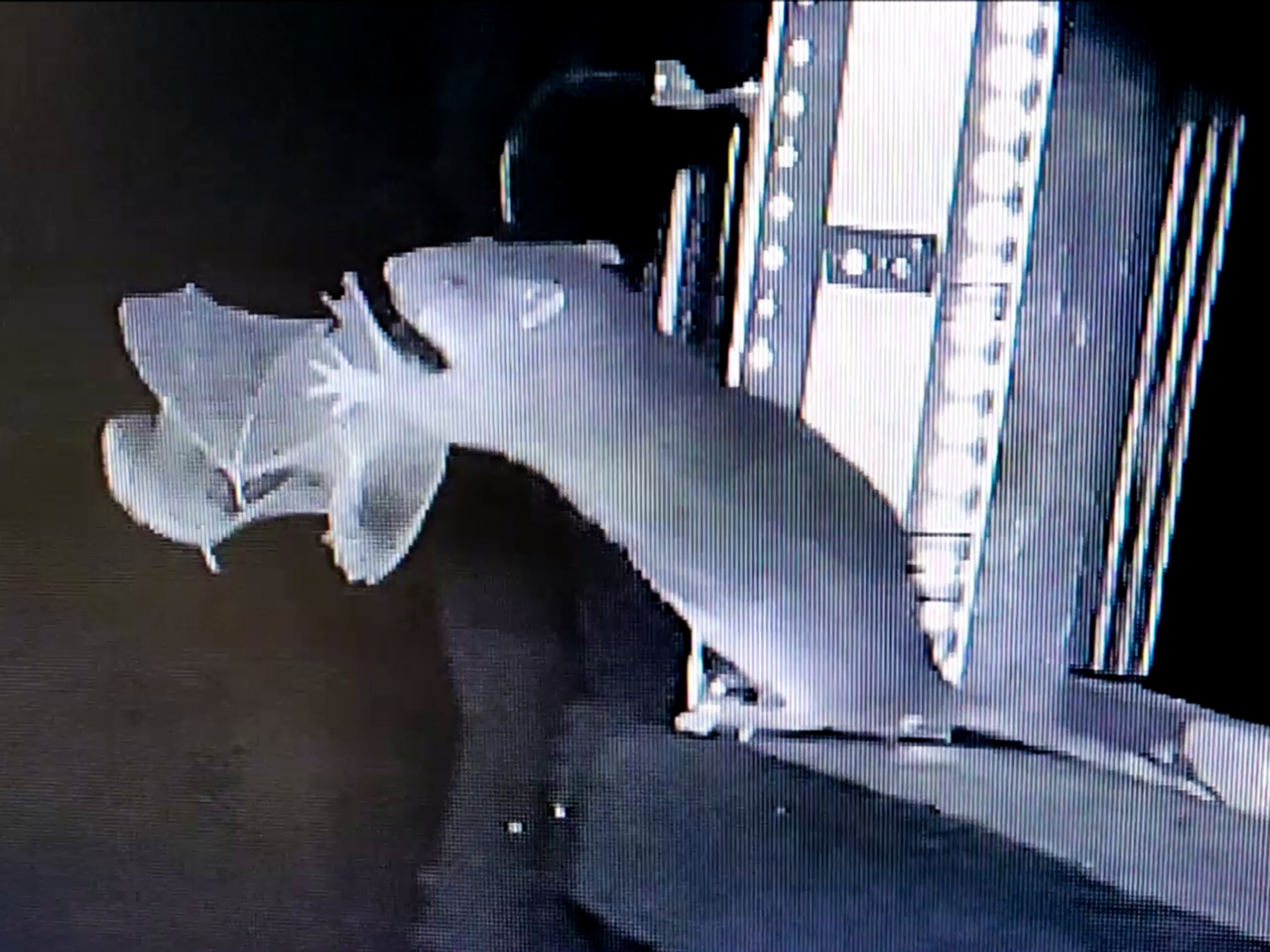
Echolocation is nature’s built-in sonar. Here’s how it works.
From beluga whales to bats and even to humans, many animals make sounds that bounce back from objects to help with navigation and hunting.
Nature’s own sonar system, echolocation occurs when an animal emits a sound wave that bounces off an object, returning an echo that provides information about the object’s distance and size.
Over a thousand species echolocate, including most bats, all toothed whales, and small mammals. Many are nocturnal, burrowing, and ocean-dwelling animals that rely on echolocation to find food in an environment with little to no light. Animals have several methods for echolocation, from vibrating their throats to flapping their wings.
Nocturnal oilbirds and some swiftlets, some of which hunt in dark cave environments, “produce short clicks with their syrinx, the vocal organ of birds,” Kate Allen, a postdoctoral fellow in the Department of Psychological and Brain Studies at John Hopkins University, says by email.
Some people can also echolocate by clicking their tongues, a behavior shared by only a few other animals, including tenrecs, a shrew-like animal from Madagascar, and the Vietnamese pygmy dormouse, which is effectively blind.
Bat signals
Bats are the ultimate poster animal for echolocation, using their built-in sonar to pursue fast-flying prey at night.
Most bats, such as the tiny Daubenton’s bat, contract their larynx muscles to make sounds above the range of human hearing—the batty equivalent of a shout, Allen says. (Related: When it comes to echolocation, some bats just wing it.)
Bat calls vary wildly among species, allowing them to distinguish their voices among other bats in the neighborhood. Their calls are also specific to a particular environment and prey type: The European bat “whispers” in the presence of moths to avoid detection.
Some moths, though, have evolved their own defenses against echolocating bats. The tiger moth flexes the tymbal organ on either side of its thorax to produce clicks, which jams bat sonar and keeps the predators at bay.
As expert echolocators, some bats can zero in on objects as small as 0.007 inch, about the width of a human hair. Because insects are always on the move, bats have to click continuously, sometimes making 190 calls a second. Even with such difficult quarry, the predators can still eat half their weight in insects each night.
Leaf-nosed bats make echolocation calls through their large, intricately folded noses, which helps focus sounds that bounces back. Some species can also rapidly change their ear shape to accurately pick up incoming signals.
A few fruit bats, such as the South Asian lesser dawn bat, even make clicks by flapping their wings, a recent discovery.
Ocean soundwaves
Echolocation is a logical strategy in the ocean, where sound travels five times faster than in air.
Dolphins and other toothed whales, such as the beluga, echolocate via a specialized organ called the dorsal bursae, which sits at the top of their head, close to the blowhole. (Read how whales have a “sonar beam” for targeting prey.)
A fat deposit in this area, called the melon, decreases impedance, or resistance to soundwaves, between the dolphin’s body and the water, making the sound clearer, says Wu-Jung Lee, a senior oceanographer at the University of Washington Applied Physics Laboratory.
Another fat deposit, stretching from a whale’s lower jaw up to its ear, clarifies the echo that returns from prey, such as fish or squid.
Harbor porpoises, a favorite prey of orcas, make extremely speedy, high-frequency echolocation clicks that their predators can’t hear, allowing them to remain incognito.
Most marine mammal echolocation sounds are too high for humans to hear, with the exception of sperm whales, orcas, and some dolphin species, Lee adds.
Navigating by sound
In addition to hunting or self-defense, some animals echolocate to navigate through their habitats.
For instance, big brown bats, which are widespread throughout the Americas, use their sonar to weave their way through noisy environments, such as forests abuzz with other animal calls.
Amazon river dolphins may also echolocate to move around tree branches and other obstacles created by seasonal flooding, Lee says.
Most humans who echolocate are blind or vision-impaired and use the skill to go about their daily activities. Some make clicks, either with their tongues or an object, like a cane, and then navigate via the resulting echo. Brain scans of echolocating humans show the part of the brain that processes vision is employed during this process. (Read how blind people use sonar.)
“Brains don’t like undeveloped real estate,” Allen says, so “it’s too metabolically expensive to maintain” echolocation in people who don’t need it.
Even so, humans are remarkably adaptable, and research shows that, with patience, we can teach ourselves to echolocate.




